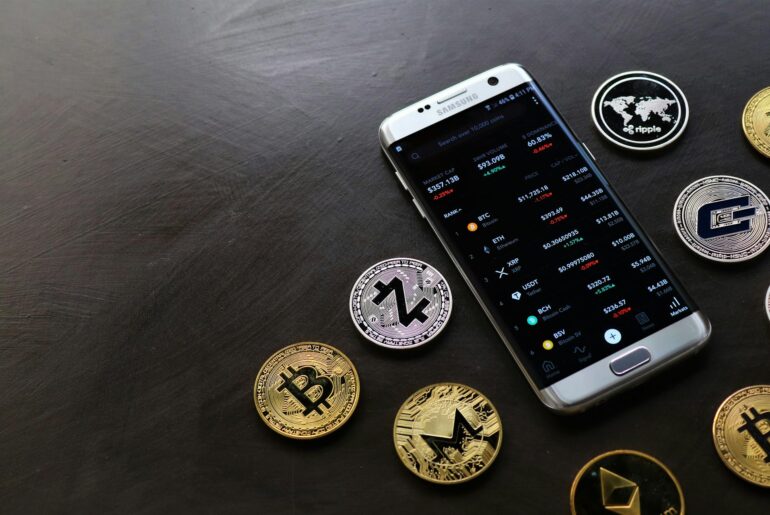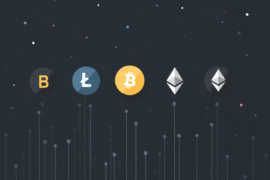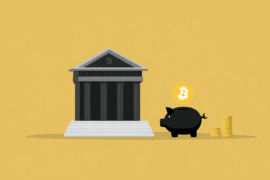This article may contain references to products or services from one or more of our advertisers or partners. We may receive compensation when you click on links to those products or services. Nonetheless, our opinions are our own.
The information presented in this article is accurate to the best of our knowledge at the time of publication. However, information is subject to change, and no guarantees are made about the continued accuracy or completeness of this content after its publication date.
As cryptocurrency adoption expands, so does the presence of deceptive platforms aiming to exploit user inexperience. Discerning investors can avoid many risks by identifying common indicators of fraudulent operations. This outlines ten warning signs that a crypto platform may not be safe, followed by practical strategies to safeguard digital assets.
- 1. Lack of Verifiable Contact Information
- 2. Guaranteed or Unusually High Returns
- 3. Opaque Business Operations
- 4. Unregulated or Unlicensed Status
- 5. High-Pressure Messaging or Sales Tactics
- 6. Poor Website Functionality or Errors
- 7. Sensational or Misleading Marketing
- 8. Complicated or Delayed Withdrawals
- 9. Absence of Public User Feedback
- 10. Overly Generous Affiliate Programs
- Protecting Your Digital Assets
- Final Perspective
- Frequently Asked Questions
- Recommended Reads
1. Lack of Verifiable Contact Information
Trustworthy platforms provide accessible and verifiable customer support options. A missing support email, contact form, or office location may indicate that the operation does not want to be held accountable. This absence can also complicate resolution if problems occur with fund access or security.
2. Guaranteed or Unusually High Returns
Platforms offering fixed profits or returns with minimal risk often rely on unrealistic promises. Cryptocurrency markets are volatile and inherently unpredictable. Claims of guaranteed earnings are not only misleading but are also common techniques used by scams to attract unsuspecting users.
3. Opaque Business Operations
A lack of clarity around how a platform handles trades, fees, or user funds is a strong warning sign. Legitimate services offer clear, accessible information about how they function. When details about company structure, fee schedules, or fund custody are withheld or confusing, users may be exposed to financial harm.
4. Unregulated or Unlicensed Status
In jurisdictions with established regulatory frameworks, digital asset platforms are typically expected to register with financial authorities. A platform that does not display regulatory disclosures or proof of compliance may be operating outside the bounds of the law. Registration ensures oversight, dispute mechanisms, and security standards.
5. High-Pressure Messaging or Sales Tactics
Scam platforms often attempt to force decisions through urgency. Messages warning users of expiring opportunities, time-limited offers, or demands for immediate deposits are strategies designed to prevent careful consideration. Reputable services do not pressure users into transactions.
Voted "Best Overall Budgeting App" by Forbes and WSJ
Monarch Money helps you budget, track spending, set goals, and plan your financial future—all in one app.
Get 50% OFF your first year with code MONARCHVIP
6. Poor Website Functionality or Errors
Technical issues, broken links, poor design, and language mistakes may indicate a hastily assembled or neglected platform. Financial services typically invest in secure and user-friendly environments. A disorganized site may suggest a lack of long-term operational intent or concern for user experience.
7. Sensational or Misleading Marketing
If a platform relies on bold advertisements, exaggerated claims, or unclear endorsements, users should be cautious. Reputable platforms tend to focus on product features, clear communication, and measurable benefits. Heavy emphasis on hype can indicate misdirection.
8. Complicated or Delayed Withdrawals
A platform should allow users to withdraw funds efficiently. If the withdrawal process involves unnecessary steps, repeated identity checks, unexplained fees, or consistent delays, the platform may be attempting to withhold user funds or conceal liquidity issues.
9. Absence of Public User Feedback
Legitimate platforms generally accumulate organic reviews across independent sources, including forums, comparison sites, and industry channels. When a platform has few reviews, no critical feedback, or only appears in sponsored placements, it may not have a real user base or could be actively suppressing negative reports.
10. Overly Generous Affiliate Programs
Referral and affiliate marketing are common in the digital finance sector, but unusually high commissions or a focus on recruitment over product features can suggest a pyramid-style structure. If promotional efforts dominate the platform’s presence, its core service may be secondary to attracting new participants.
Protecting Your Digital Assets
Recognizing red flags is a foundational step. To further reduce risk, users should adopt practical, informed security practices.
Research Platforms Thoroughly
Investigate company leadership, operational history, and user complaints. Search for platform names in independent discussion forums and reviews. Consistent negative patterns or lack of verifiable information are valid reasons to avoid engagement.
Use Platforms with Documented Compliance
Established services with public registration records, clear business terms, and compliance documentation are preferable. Users should prioritize exchanges and wallets that adhere to international standards for consumer protection and financial reporting.
Enable Multi-Factor Authentication
Enabling two-factor authentication (2FA) and other multi-layered security tools significantly reduces exposure to account breaches. Users should ensure that security features are activated during setup and kept current.
Limit Initial Investments
Start with modest deposits when testing an unfamiliar platform. Small-scale activity allows users to evaluate reliability, customer support, and withdrawal processes before exposing more capital.
Maintain Control of Private Keys
Users should never share private keys and should consider offline storage options such as hardware wallets for long-term holdings. Retaining full control of digital keys limits exposure to platform-side breaches or policy changes.
Monitor Account Activity
Regularly reviewing account activity can help detect unauthorized transactions or system irregularities. Vigilant monitoring also promotes faster response if fraudulent activity is suspected.
Stay Informed About Security Trends
Cybersecurity risks evolve rapidly. Subscribing to updates from credible sources and tracking platform changes allows users to adapt and maintain a secure posture.
Final Perspective
Digital assets offer innovation and opportunity, but not without risk. Many fraudulent platforms operate convincingly until users encounter withdrawal issues, security breaches, or sudden closures. By staying informed, verifying legitimacy, and managing access carefully, users can participate in the digital finance ecosystem with greater security and confidence.
Frequently Asked Questions
What signs suggest a platform may be fraudulent?
Some of the most telling signs include lack of customer support, unrealistic profit promises, aggressive marketing, complex withdrawals, and no evidence of regulation or oversight.
How can platform legitimacy be verified?
Search for official registration with financial authorities, check for documented leadership teams, and evaluate third-party reviews. Lack of transparency in these areas often signals higher risk.
Why is reliable customer support significant?
Fast, responsive support helps address locked accounts, transaction errors, or technical issues. A lack of timely communication can create long-term risks, especially during outages or cyberattacks.
How does regulation reduce scam risk?
Platforms that meet financial compliance standards are subject to audits, conflict resolution processes, and user protection laws. Regulatory frameworks help ensure minimum levels of operational quality and accountability.
What do complex fees suggest?
Hidden or difficult-to-understand fee structures may be used to confuse users or obscure actual platform costs. Reputable services provide clear fee breakdowns in advance.

Reviewed and edited by Albert Fang.
See a typo or want to suggest an edit/revision to the content? Use the contact us form to provide feedback.
At FangWallet, we value editorial integrity and open collaboration in curating quality content for readers to enjoy. Much appreciated for the assist.
Did you like our article and find it insightful? We encourage sharing the article link with family and friends to benefit as well - better yet, sharing on social media. Thank you for the support! 🍉
Article Title: 10 Red Flags a Crypto Platform is a Scam and How to Protect Your Money
https://fangwallet.com/2025/06/24/protect-crypto-assets/The FangWallet Promise
FangWallet is an editorially independent resource - founded on breaking down challenging financial concepts for anyone to understand since 2014. While we adhere to editorial integrity, note that this post may contain references to products from our partners.
The FangWallet promise is always to have your best interest in mind and be transparent and honest about the financial picture.
Become an Insider

Subscribe to get a free daily budget planner printable to help get your money on track!
Make passive money the right way. No spam.
Editorial Disclaimer: The editorial content on this page is not provided by any of the companies mentioned. The opinions expressed here are the author's alone.
The content of this website is for informational purposes only and does not represent investment advice, or an offer or solicitation to buy or sell any security, investment, or product. Investors are encouraged to do their own due diligence, and, if necessary, consult professional advising before making any investment decisions. Investing involves a high degree of risk, and financial losses may occur including the potential loss of principal.
Source Citation References:
+ Inspo
There are no additional citations or references to note for this article at this time.












































